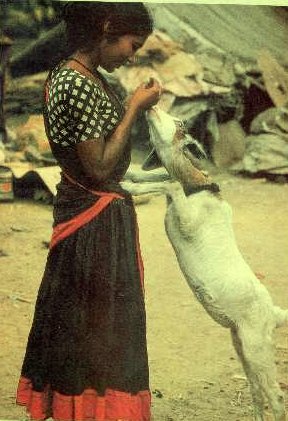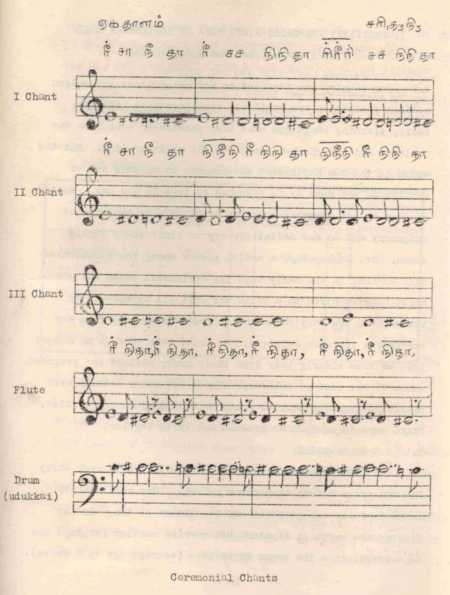
Home | Biodata | Biography | Photo Gallery | Publications | Tributes
Music and Musical Instruments

 |
Home | Biodata | Biography | Photo Gallery | Publications | Tributes Music and Musical Instruments |
 |
Music of the Narikorava People
In Studies on Vaagrivala, A Collection of papers on the Narikorava
people of Tamil Nadu
Edited and Compiled by J.P.Vijayathilakan, STAT-27/
77, February 1977
Gift Siromoney
Very little is known about the music of the Narikorava people, and the little that we have observed we record here.
During their annual festival the tribal people get together and sing and dance to the music of flute and a drum commonly called udukkai*. This drum is played traditionally in the temples of the small-pox goddess and other village deities. This small hour-glass shaped drum has two faces, which are laced with a twine. A thick tape passes over the threads in the middle. The drum is held in the left hand and played with the fingers of the right hand. By increasing the pressure on the tape the tone is sharpened and this constant sharpening and the flattening of the pitch produces a peculiar effect.
The songs sung are prayers addressed to the goddess Mariamman, the small-pox deity. One of the singers gave a free translation in Tamil for our benefit but singing in the traditional tune. The flute accompanist did not attempt to produce the melody but followed a strict pattern that provided a suitable background.
The chant used by the singer sounded quite unusual. The singer used five notes and each note differed from the next lower note by a semitone. Since the five notes span only two and a half tones they are not part of any classical raga. In classical Indian music the notes Shadjama and Panchama, the tonic and the dominant will invariably be present in every melody.
We give here an outline of the chants used by the singer. The first chant contains four notes in the form of descending chromatic scale. Different variations were used but the basic melodic pattern remained fairly stable. We represent the four notes Ri1, Sa, Ni3 and Ta3 of the Sa, Ri, Ga, Ma notation. We have represented the first two chants in both the staff notation and the Tamil notation. Both the chants are used again and again in different orders. It is not possible to represent the third chant in the Tamil notation used for the first two chants. Here an additional note one semitone lower than Ta3 is used and one may represent each bar separately in Tamil notation but we shall not attempt it here. The accompaniment for the flute and the drum (udukkai) are also given but the representation is only an approximate.
It will be interesting to find out whether the same sort of chants are used in other parts of the country associated with the buffalo sacrifice performed in Sakthi worship. It may throw light on the distant past and the affinity of the Narikorava tribe with other related tribes. Much work needs to be done in the field of ethnomusicology in our country.
The chants were rendered by the tribal musician who calls himself Vettiver (which means root of the medicinal plant Vetiveria zizanioides) near Madras airport and recorded by Professor B.M.Arthur of the department of physics of our college.
*P.Sambamoorthy: Catalogue of Musical Instruments exhibited in the government museum, Madras, Madras 1962.
